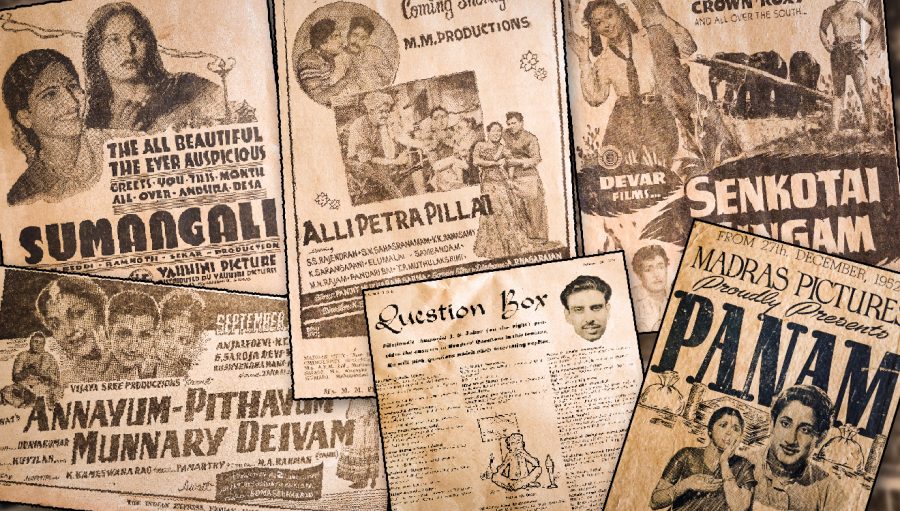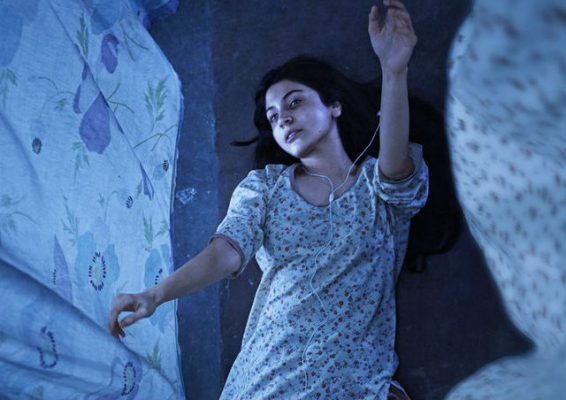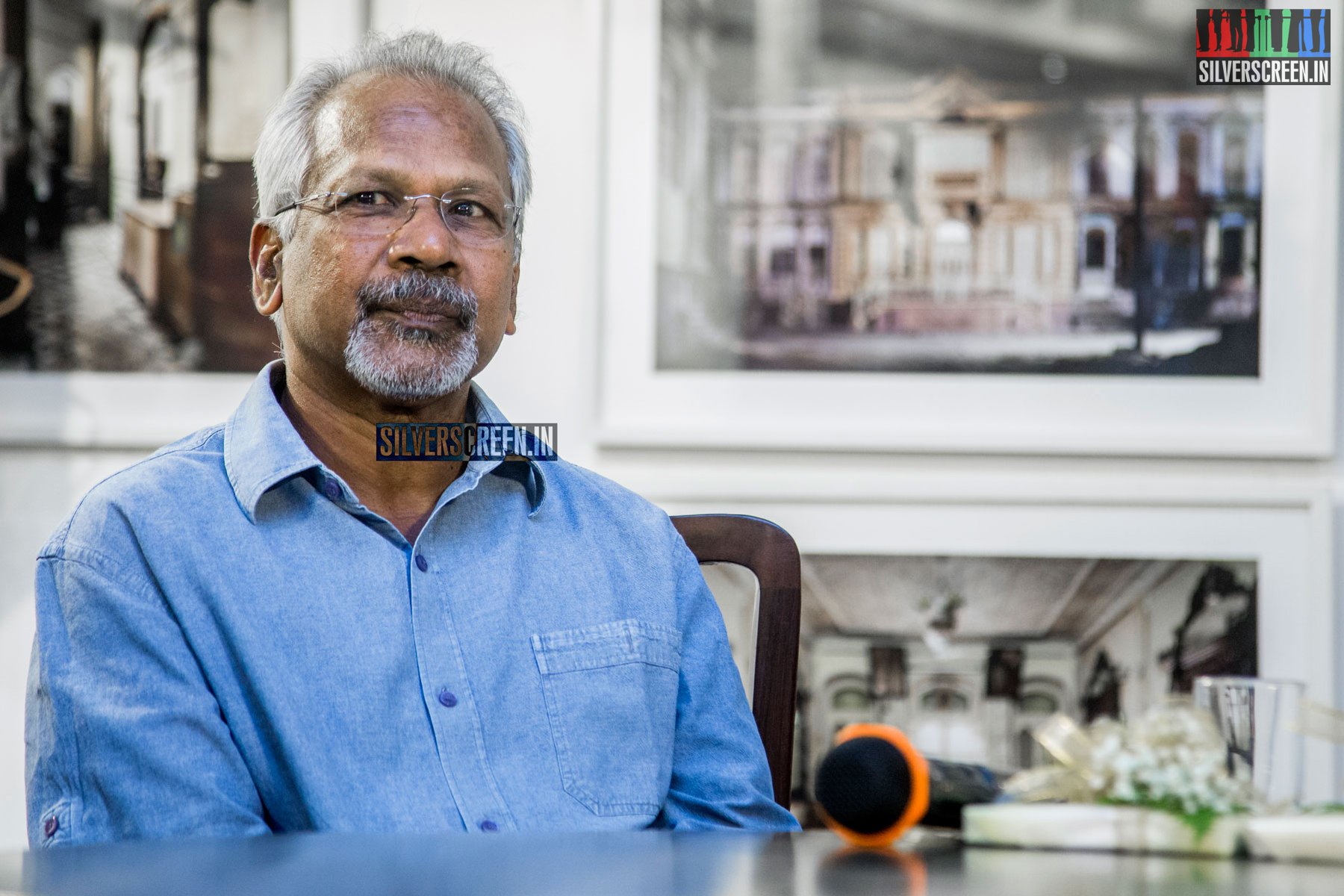Filmmakers today have a serious advantage when it comes to promoting their work, given that social media (with the additional help of click farms and paid promoters) can make anything, even a simple hashtag, trend all over the country.
Anybody who follows cinema news, particularly in India, will be familiar with the tweets and Facebook updates that talk about a film’s first-look, teasers, trailers, and other information from time to time. The hashtags follow suit, and soon enough, we get to know how many views it has had and how many times it’s been shared.
Back in the 40s and 50s, promoting a film was less complicated. Nothing too grandiose, nothing too *out there*. Magazines such as Filmfare, and newspapers devoted a square of space for advertisements, which filmmakers made use of. People would often see the advertisement, rely on some good word-of-mouth, and perhaps then visit the only other theatre showing the film.
In this throwback, we explore some of those advertisements featuring iconic Tamil stars in films made by equally iconic people. The fact being that, despite lesser reach, people still flocked to watch those movies following a mere advertisement in a daily.
Panam (1952)
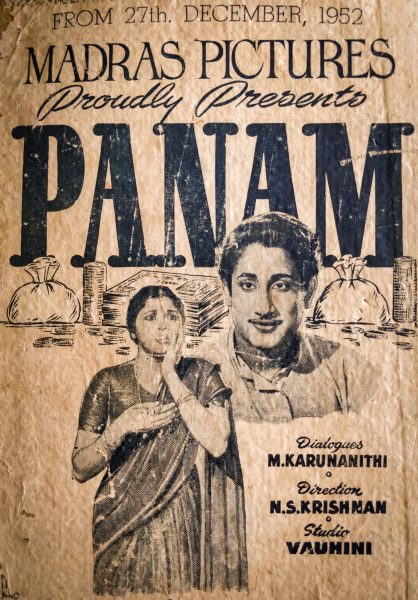
The film’s title literally translates to ‘money’. Starring Sivaji Ganesan, Padmini, the film was directed by NS Krishnan and is known for its songs composed by the dynamic-duo of that time – Viswanathan–Ramamoorthy with lyrics by Kannadasan.
Written by M Karunanidhi, the film touched upon social reforms and the historic Dravidian movement.
Sumangali (1940)
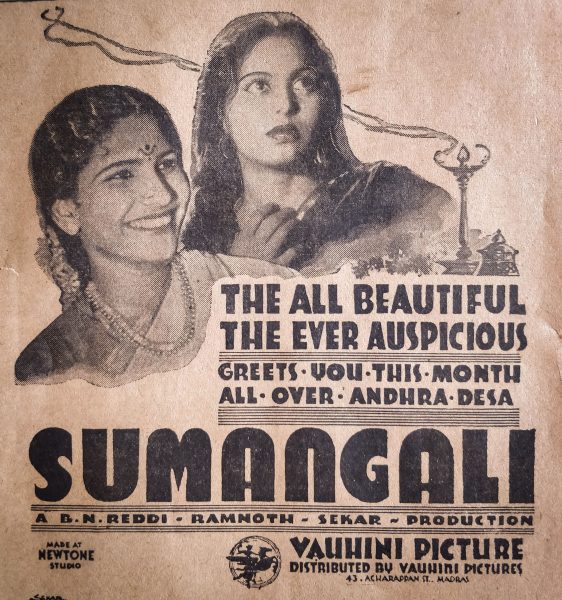
If there’s one thing that appears really striking in this advertisement/poster, it is the fact that the two women in the film – Malathi and Kumari – are featured in it while the male lead is nowhere to be seen. A stark contrast to all the first-look posters, teasers, and trailers of current times where the male actor is given all the attention while the female lead appears only in the film.
This 1940 Telugu film explores the theme of widow remarriages. AS Giri plays Sathyam, a progressive man who is loved by two women – one an educated, progressive widow and the other, an extremely orthodox woman.
The film is written, produced, and directed by BN Reddi.
Alli Petra Pillai (1959)

Directed by K Somu, this film stars SV Sahasranamam, Pandari Bai, and VK Ramaswamy. The film’s title translates to ‘The boy Alli gave birth to’.
More than the story, the two songs in the film – “Ejaman Petra Selvame” and “Paisaavai Pottu Naisaaga Vaangi” – were very popular, with lyrics by A Maruthakasi.
Senkotai Singam (1958)
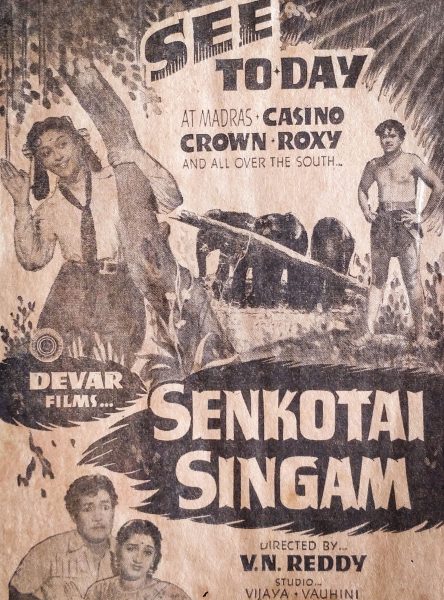
Sengottai is a municipality in the district of Tirunelveli, Tamil Nadu. The title refers to the ‘lion’ in Sengottai. Starring Udaykumar, B Saroja Devi, Pandari Bai, and SV Sahasranamam, this Tamil film is about how a man’s wicked intentions leaves his son without a lover, and how she takes refuge in the forest with their son, who later grows up to a be a fierce warrior in the jungle.
The song “Nadada Raja”, written by A Maruthakasi and picturised on Udaykumar’s character riding an elephant, is supposed to be have been really famous.
Annayum-Pithavum Munnary Deivam (1958)
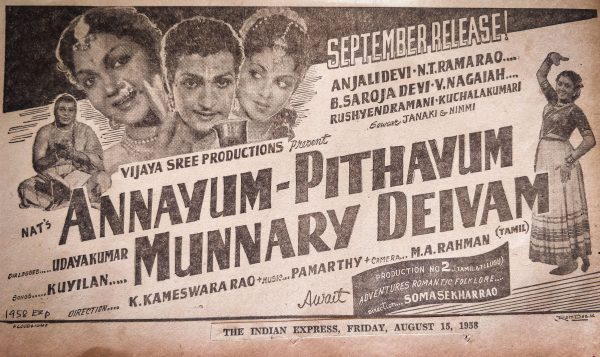
There isn’t much about this Tamil film other than the fact the advertisement informed readers a month in advance about an upcoming film. Much like other posters, the women are shown as equally important figures in the film and there ad even tells its readers to ‘await adventures, romantic folklore’.
*****
Advertisements aside, here’s a throwback to an old page from a magazine called Filmland, where humourist IS Johar responds to readers’ bizarre questions.
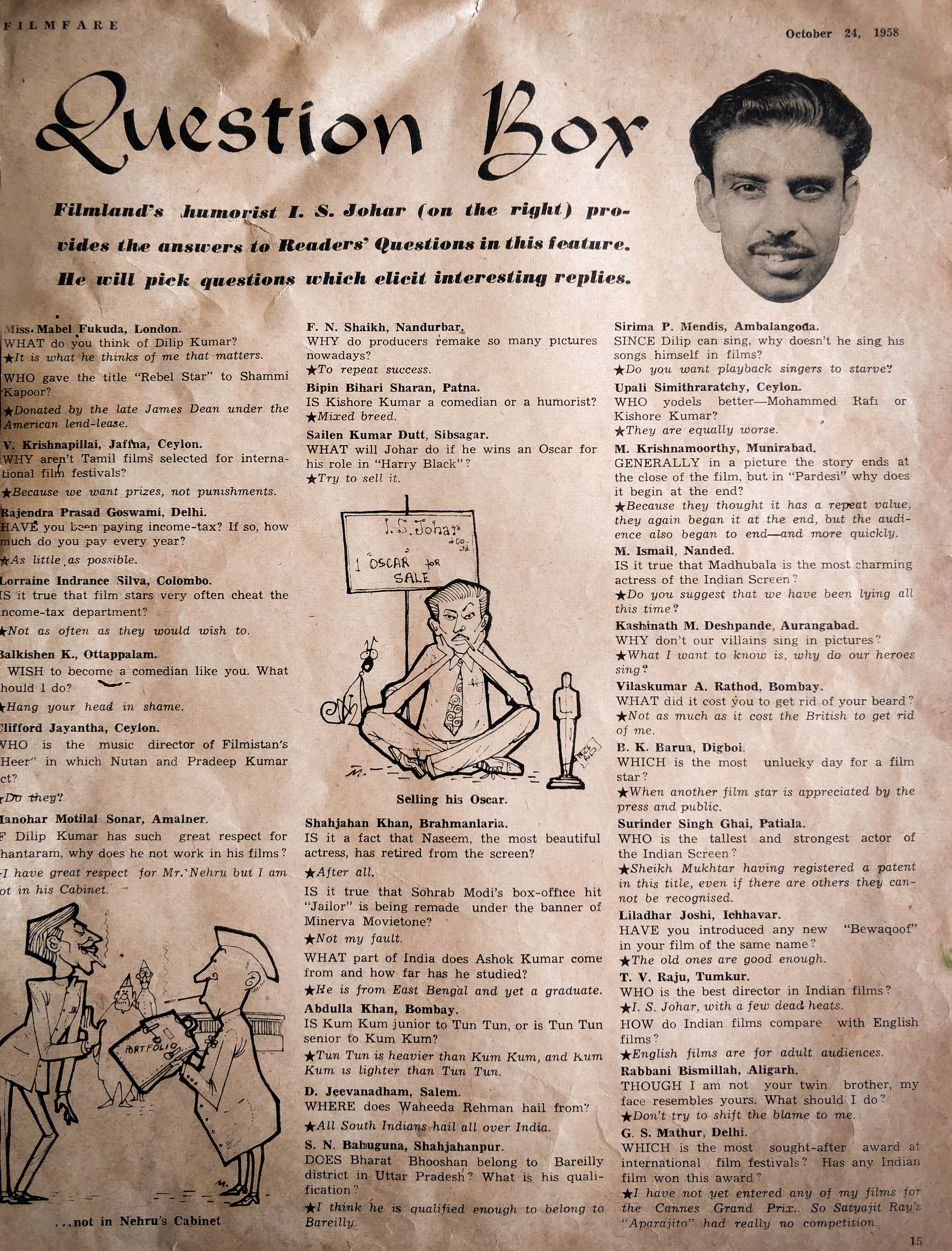
*****
